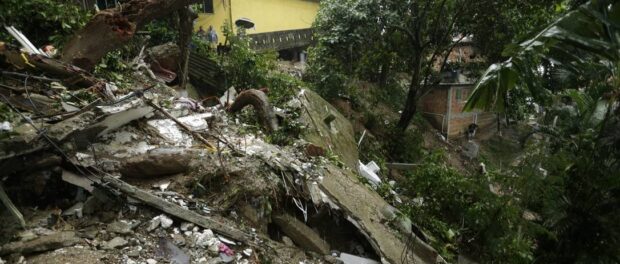
One month ago, record rainfall devastated Rio de Janeiro. The torrential downpour lasted through the night of April 8 and continued into the following day, flooding houses and triggering fatal landslides across the city.
The rains, the strongest recorded in 22 years, led to ten deaths. Subsequent erosion resulted in the collapse of a building in Muzema, in Rio’s West Zone, killing an additional 24.
While some favelas have made substantial recoveries since April’s floods, others have reported long-lasting damage, insufficient support from local authorities, and consistent patterns of neglect from the city. RioOnWatch surveyed a number of affected favelas, contacting residents and community leaders to learn more.
Vidigal
In April, rains gushed downhill through Vidigal, located in Rio’s South Zone, turning its neighboring byway Av. Niemeyer into an impassable river. In response, Vidigal residents reported significant attention from public authorities. In addition to terrain clearing work from GEO-Rio, the municipal geotechnical agency, Vidigal received visits from the City’s Civil Defense, the local Social Assistance Reference Center (CRAS), and the Municipal Secretary of Infrastructure and Housing.
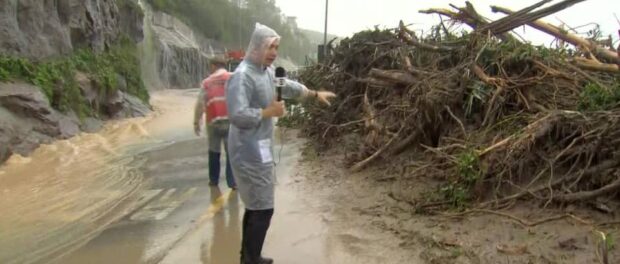
The City “removed some residents from the affected areas,” said André Gosi, cultural director of the Vidigal Residents’ Association. “They have been connected to the housing authority and are receiving social rent assistance,” he said. The community received many donations, even above what was necessary, Gosi reported.
Speaking before the Parliamentary Commission of Inquiry (CPI) on Flooding at Rio’s City Council on April 26, however, Vidigal resident Felipe Paiva reported that he was still dealing with the effects of February’s rains. During that storm, which resulted in six deaths around the city, warning sirens were not activated in Vidigal. Paiva’s house collapsed with him inside. Paiva told the CPI that he was unable to rebuild his house and did not know when he would be able to return home.
Rio das Pedras
Residents of Rio das Pedras, in a low-lying area of the city’s West Zone, reported major, long-lasting damage. “People lost everything. The houses really flooded, and until now we still have people without shelter, with nowhere to live,” said Andrea Ferreira of the Rio das Pedras Residents’ Commission.
“What the city could have done—and didn’t do—is prevention,” she said, pointing to consistent neglect and lack of maintenance for a local drainage canal. The canal was filled with trash, which exacerbated the flooding.
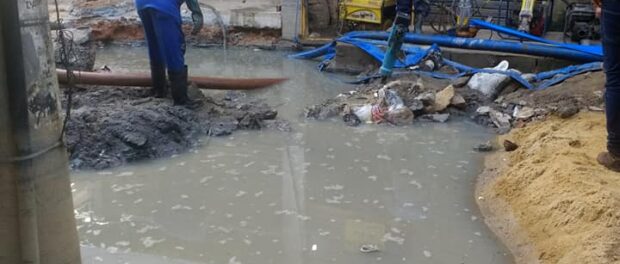
The City’s clean-up efforts were similarly inadequate, said Lorena Carvalho, also of the Residents’ Commission. “What was missing was a strategic plan to deal with the situation.” In the absence of a coordinated response, flood water and scraps flowing from damaged houses remained in Rio das Pedras for the weeks that followed. “We became totally isolated because of this lack of attention.”
Cantagalo
Residents of Cantagalo, also on a hillside in Rio’s South Zone, report that the situation has mostly stabilized. Several houses were swamped with eroded earth during the landslides that the community witnessed during the rains. While the community mobilized to help clean out the affected areas, work still remains.
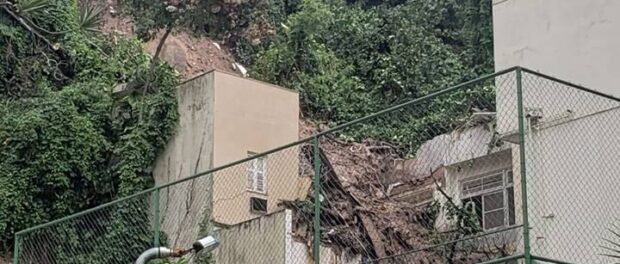
Cantagalo was hit hard during February’s heavy rainfall as well and is still recovering. A local building that houses the activities of numerous community organizations remains in precarious conditions, says Rosana Mendes, a resident of Cantagalo and instructor at the Harmonicanto Project, a community youth organization. “Two towers fell and the building has been without energy since then. Few organizations [hosted in the space] have been able to continue their activities, and the CIEP [public school] is only able to continue because the City gave it a generator.”
Larissa Montez of PPG Informativo, an online community newspaper in Cantagalo, says her group undertook a donation campaign for families in need but that the government has not given the green light for the community to engage in a full recovery. “From the City we only received visits from GEO-Rio and COMLURB [Rio’s municipal waste collection utility], saying that they cannot clean the area. We need the Civil Defense to come and tell us what we can and can’t do in affected areas and in areas of risk,” said Montez. “We can only begin a collective action cleaning campaign once the Civil Defense authorizes it.”
Pavão-Pavãozinho
Márcia Souza, a resident of Cantagalo and director of the Favela Museum, spoke to Antônio Nilson in neighboring Pavão-Pavãozinho. Nilson’s family was directly impacted by the rains and remarked that nothing has been done.
“GEO-Rio arrived to conduct an audit and publish an assessment but nothing is ready yet. Two families are without homes.” The two houses have become completely uninhabitable, with one of the houses’ rooms holding back a wall of trash. “The only reason no one died was that most people were not inside their homes and because that room withstood the wall [of trash],” said Nilson. The City needs to take action, he insisted.
Nilson himself, who is undergoing treatment for brain cancer, is in serious need of basic supplies and complete house furnishings—his family of four lost everything to the rain.]
Indiana
While the favela of Indiana in Tijuca, a middle-class neighborhood in the North Zone, saw no deaths or collapsed houses, an improper construction at a nearby school diverted water exiting Tijuca National Park, causing floodwaters to rush into residential areas rather than flow into the river that passes by the community. Several houses saw their first floors completely flooded and residents resorted to building their own makeshift barriers out of wooden planks and available scraps in order to prevent further damage.
Indiana Residents’ Commission member Marcello Deodoro lamented that assistance from the City was piecemeal. “The lack of support in the form of larger works is already a part of our routine. No infrastructure works occur here,” said Deodoro, who argued that the City refuses to take on upgrading and river containment projects because they are set on removal as the only solution for Indiana. Indiana’s public defender and its Residents’ Commission have sought infrastructure improvements via the judiciary but have seen no progress from the City. “This community is actually designated as ‘low-risk,’” said Deodoro. “But low-risk for how much longer?”
Rocinha
Residents from Rocinha also testified before the CPI on Flooding at Rio’s City Council on April 26, demanding adequate resources for future prevention. Maria Consuelo Pereira dos Santos read an open letter from residents to the CPI, requesting “improved environmental education programs, inclusive city planning efforts, and functioning alert systems to warn residents about extreme weather events.”
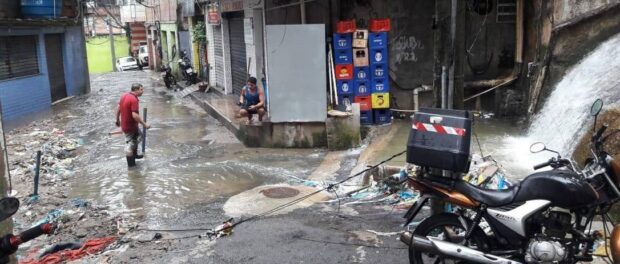
“Crivella’s campaign slogan was ‘the time has come to care for people’—but who?” yelled Santos. “Because many people are not getting anything.”
Resident Vanda Ventura, who recounted standing on her bed with her daughters as floodwater washed away all her possessions, reported that flood victims received social rent assistance in the amount of R$400 (US$100) per month. “How am I supposed to find a home in Rio de Janeiro with R$400?” she asked.
